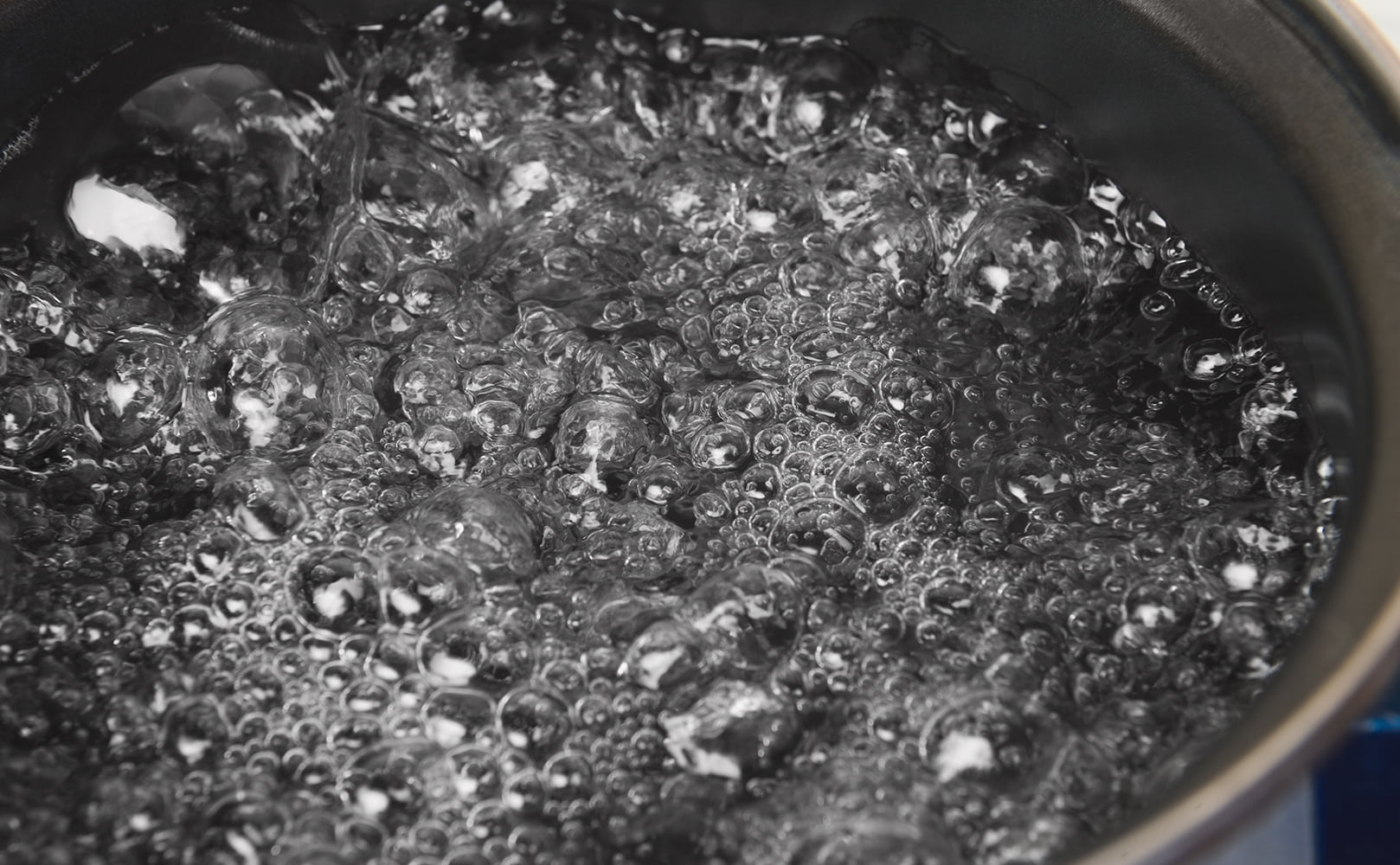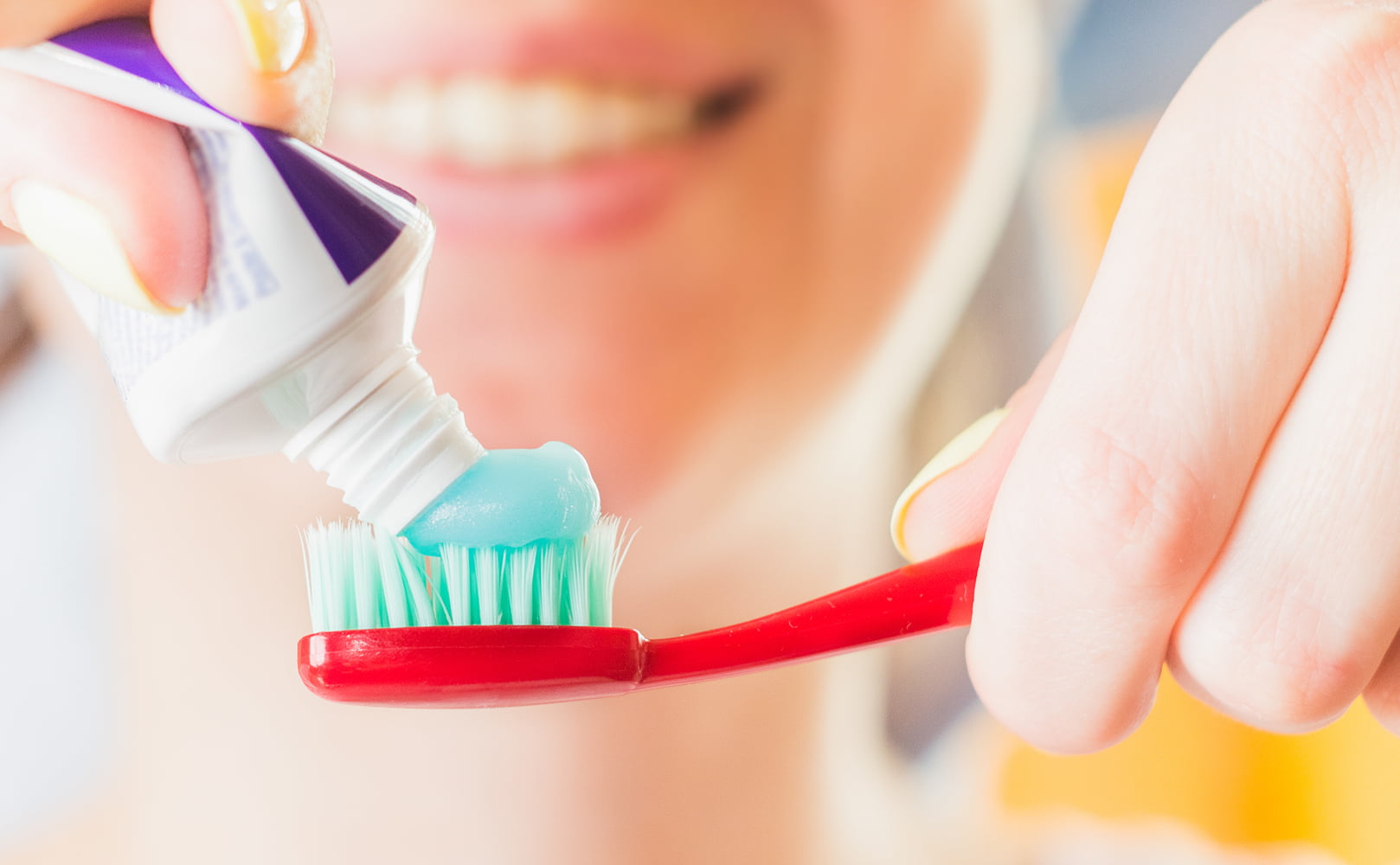Does Boiling Water Remove Fluoride?
Written by: Gene Fitzgerald // Last Updated: Jan 4, 2023
This page may contain affiliate links. If you buy a product or service through such a link we earn a commission at no extra cost to you. Learn more.
If you live in the United States, chances are your public water supply is enriched with fluoride before it leaves the treatment plant.
Fluoridation of tap water refers to the controlled addition of fluoride solely to reduce tooth decay. But do we need additional fluoride in our drinking water when we are already consuming enough of the element through other sources – think salt, milk, toothpaste?
Many people worried about excess consumption of fluoride want to know if boiling their water will help remove it. Stay with us as we answer not only this question, but also explore how water filtration can remove the infamous salt.
Key Takeaways
- Boiling water has no effect on fluoride content.
- In fact, it may even increase the concentration of fluoride as some of the water evaporates.
Does Boiling Water Remove Fluoride?
While boiling water is effective at making it microbiologically safe, it has no effect on fluoride content.
Quite the contrary, it might increase the concentration of fluoride as some of the water evaporates.
In a nutshell, boiling water does not remove fluoride and it won’t help if you want to eliminate any other salts or minerals either, whether good or bad.
What Does and Doesn’t Boiling Water Remove?
Boiling water is a sure-shot way to kill disease-causing microorganisms such as viruses, bacteria, and cysts. So, if you are facing some sort of biological contamination threat, you can boil your water to make it safe for consumption.
Unfortunately, this is right about where its usefulness ends. Apart from reducing some volatile pollutants with a low boiling point, boiling water does not remove anything from water, neither lead or chromium 6 nor nitrates etc.
In reality, boiling may concentrate the contaminants that do not vaporize while pure water evaporates.
What this means is that each glass of boiled (and cooled) water may contain a higher amount of contamination (except for microorganisms) compared to plain water.
How Can I Remove Fluoride From My Water Then?
So, how can you remove fluoride from your water then? It’s not that complicated. Water filters save the day!
They are a reliable, easy-to-use, and affordable way to purify water, giving you the liberty to have clean, filtered H20 in the comfort of your home.
This brings us to the question, which type of home water filtration system can remove fluoride?
EPA and WQA recommend bone char, activated alumina, and reverse osmosis.
Reverse Osmosis
Reverse osmosis water purification can remove well over 90% of fluoride from water. As your water passes through the RO membrane, it almost only allows water molecules to pass through. Like many other contaminants, fluoride ions are too big and get rejected.
Activated Alumina
Activated alumina is a highly porous, adsorptive, and solid form of aluminum oxide. It effectively adsorbs fluoride along with a few other contaminants from water, mainly arsenic.
An activated alumina filter only works on water that has a pH level of less than 8.5. Thus, if your water is highly alkaline, activated alumina won’t perform very well.
As water passes through the AA filter media, the granules adsorb the impurities, making your water pure and safe to consume.
What’s a good example for a water filter featuring activated alumina? The most popular one is probably the Berkey.
Bone Char
Bone char carbon – often called natural carbon – is, perhaps, one of the oldest methods used to purify water. It is a very effective filter media that can remove fluoride, some heavy metals, and radioactive particles from your water.
Keep in mind there are certain limitations to its uptake capacity for fluoride removal. The factors include:
- The quality of the char
- The method of preparation
- Other interfering ions in the water
According to filter manufacturers, bone char can remove between 90 and 95 percent of fluoride from water under optimum conditions.
Distillation
For the sake of completeness, we wanted to mention water distillation, which is not the same as boiling water. Instead, distillation involves heating the water and then cooling the condensate to turn vapor into liquid again.
Being a very effective purification method, distillation removes more or less all the fluoride from water along with hundreds of other impurities.
In a nutshell, distilled water is the closest you can get to the purest water at home.
Is Fluoride Bad For You?
Since 2011, the US Environmental Protection Agency (EPA) has defined 0.7 mg/L as the recommended level of fluoride in water.
However, the problem with using fluoridated tap water is, there is no way to tell how much fluoride is being consumed by whom.
In other words, there is a thin line between underconsumption and overconsumption. And both can be bad for your health.
There’s no reason to claim that fluoride is inherently toxic, though. It is, in fact, proven that adequate fluoride consumption is necessary to prevent tooth decay in young kids.
What’s alarming is when consumers are ingesting too much fluoride, possibly leading them to a host of illnesses and medical issues.
Here are potential problems that can result due to the consumption of fluoride beyond a safe level.
- Dental fluorosis: It refers to discoloration and disfiguring of teeth in young kids.
- Skeletal fluorosis: Excess fluoride deposits in bones can cause horrific pain, rigidity, and stiffness.
- Hyperthyroidism: It disrupts thyroid function that leads to slow metabolism, weight gain, and extreme fatigue.
- Neurological issues: It may cause learning disabilities, ADHD, and poor cognitive abilities in children. In severe cases, it can also lead to sleep disorders.
- Reproductive issues
- Cardiovascular issues
How to Further Reduce Fluoride Exposure
Apart from filtering fluoridated water, here are a few other ways to reduce your overall fluoride exposure.
1. Toothpaste
Consider using non-fluoridated toothpaste and other dental products. It may also be time to wave goodbye to fluoride treatments at your dentist.
2. Unprocessed Organic Foods
Owing to the excessive use of fluoride-based pesticides, inorganic food contains a significantly higher amount of fluoride.
Your best bet is to shop for organic and unprocessed food items.
3. Green and Black Tea
Depending on the area it was grown, green and black tea leaves can contain a high amount of fluoride. So, it is best to reduce their consumption.
4. Coffee
Coffee is not that far behind either. Sorry to point out, but your daily dose of caffeine needs to go down to help you steer clear of fluoride.
5. Teflon Coated Cookware
Teflon contains fluoride that can leach into your water when you use it for cooking or even storing.
6. Medications
Several commonly used medications contain fluoride. It’s best to consult your physician to suggest suitable alternatives.
If you have any thoughts about the question, does boiling water remove fluoride, please don’t hesitate to leave a comment below!
Information provided on BOS is for educational purposes only. The products and services we review may not be right for your individual circumstances.
We adhere to strict editorial guidelines. Rest assured, the opinions expressed have not been provided, reviewed, or otherwise endorsed by our partners – they are unbiased, independent, and the author’s alone. We fact-check all content for accuracy. It is accurate as of the date posted and to the best of our knowledge.



